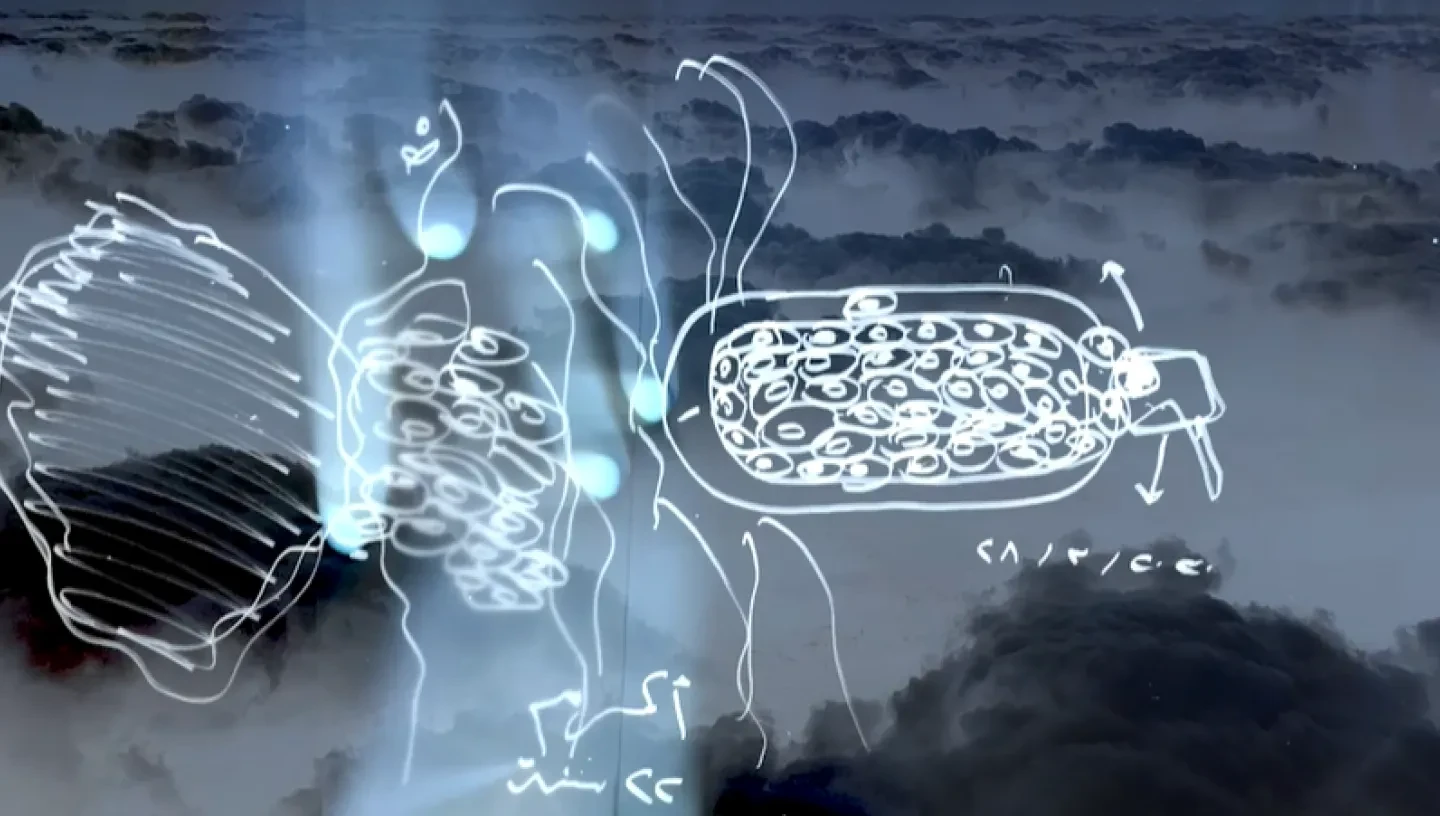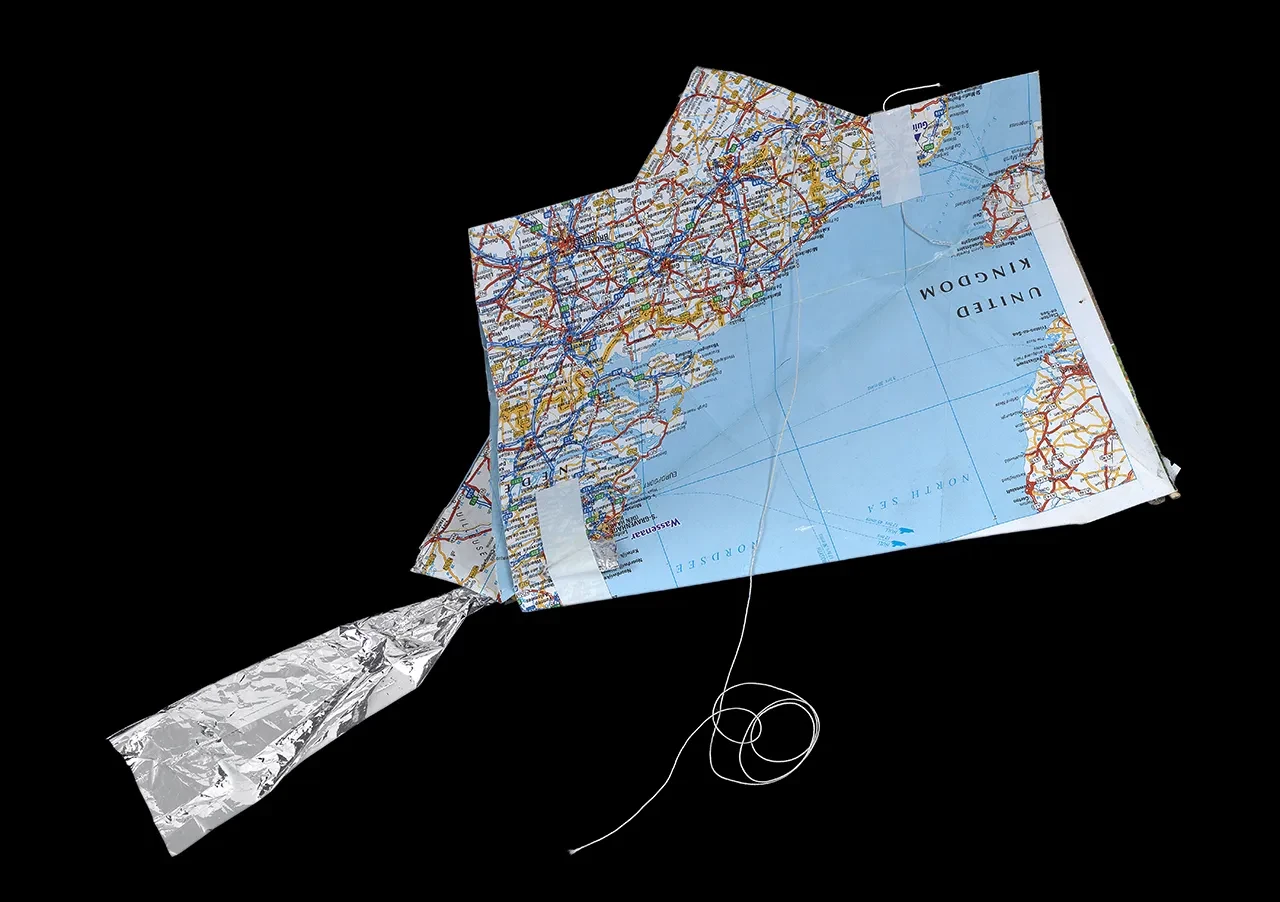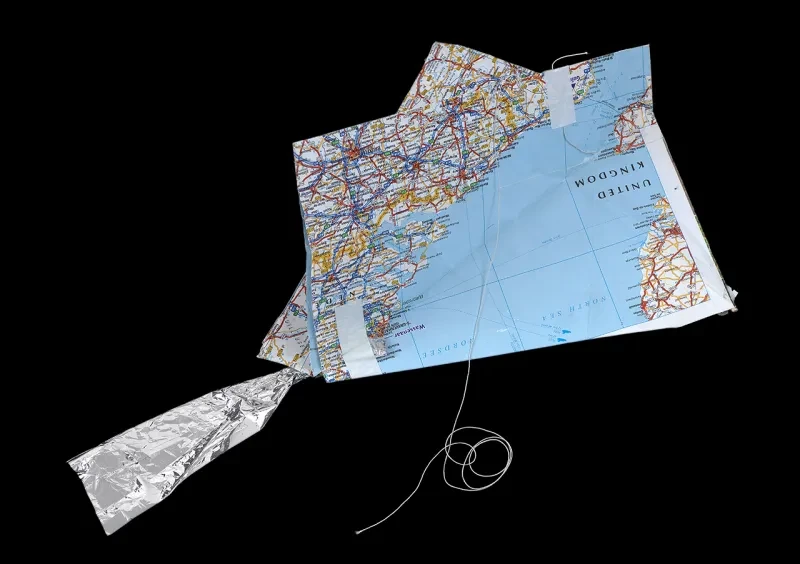
Bringing together the personal stories of individuals who made perilous journeys and Royal Museums Greenwich’s contemporary map collections, To Map Crossings / To Cross Maps is a project that highlights the state of migration today.
Through a series of conversations and workshops, artist Mahmoud Mahdy worked with three people who sought sanctuary in the UK to map and document the dangerous crossings they undertook to reach safety. The project culminated in a series of creative pieces, bringing to life their personal narratives.
Here, Mahmoud reflects on the initiative and the physical and emotional journeys of migration.
This project has been made possible thanks to Art Fund.
Trigger warning: This page includes written and oral stories of perilous boat crossings undertaken by people seeking sanctuary and the loss of life while at sea.
Introducing To Map Crossings / To Cross Maps
The project draws together two worlds. One is the world coldly drawn by powerful historic forces, organising nature into measurable segments and resulting in an image of the world as a measured objective totality.
The other is governed by the intangible - the fatal forces of fear, death, separation and violence - resisted by the unmeasurable powers of hope, solidarity and memory. The world, as it is told to us by the winners and rulers of history, and a world of how it is (and was) truly experienced, yet repressed and prohibited to exist.
Both have an oppressive hold on the migrant subject. One could be felt by the physical and physiological violence of crossing a nation-state border, and the other could be experienced through the relapse of difficult memories experienced again through sleep.
This project attempts to make way for the latter to be superimposed on the former, by mapping memory and pain, by recounting true history, visually and orally.
Visiting Royal Museums Greenwich's collections
To gather inspiration, Mahmoud and the participants visited The Prince Philip Maritime Collections Centre in Kidbrooke, Royal Museums Greenwich's state-of-the-art storage and conservation facility.
Discover some of the collection items that shaped their creative approach.
Shaping migration narratives
From our visit to the collection, we observed the idea of what pieced the narrative of a migration journey together.
The collection showed narrative-based maps that encompassed the linear nature of migration routes. They showed every stop within the journey along with their obstacles.
This gave us the idea that if we were to map migrations, perhaps some events and experiences within the journey would weigh heavier than others. Some particular experiences (or stops) would hold greater significance due to witnessing violence, or death etc., but sometimes there is no obvious reason, sometimes it can't be explained.
Our response was to look at the shape of a migration narrative like a constellation of stars, where one star would shine brighter than the others, one was a gateway to seeing the rest.
Mapping journeys
This particular approach stems from the nature of the participants' standpoint. They have all, more or less, concluded their journeys, however, still stuck and waiting for their fate from the Home Office.
This particular position doesn’t allow them to look beyond the present, until they receive the long-awaited letter that would end their sentence of indeterminacy - and grant them the right to a bank account, a job, a life, etc. - they are still stuck in their past, and technically still in their migration journey.
This gave us the ability for us to recount these journeys with more of a reflective and creative method, contrary to the urgency felt from the collection’s drawings.
Through our sessions, we began to map and explore particular events within their journeys that remained in their memories stronger than others. We picked particular crossings within the journeys as moments where we could perhaps cross it within our present, through storytelling orally and visually.
Real life stories of migration
“We suddenly hit a massive rock. The boat capsized and everyone was in the sea. All of us, men, women… The sinking of this boat, resulted with the death of one person… We all heard him crying for help… But we couldn’t help him.”
This powerful film was one of the pieces created during the project. It uses real time drawings to recount the personal experience of an individual who was part of a tragic crossing between Izmir in Turkey and the Greek island of Chios.

Refugee Week
Supported by






